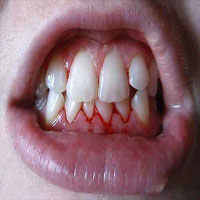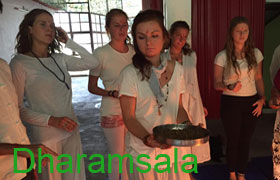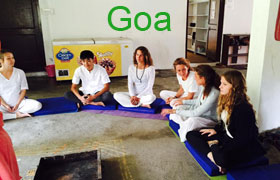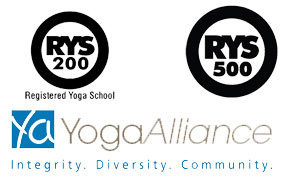Nervous Weakness
Central Nervous System, Peripheral Nervous System and Automatic Nervous System are the three parts of nervous system. Central nervous system controls sensation and motor control while peripheral nervous system connects nerves to organs and limbs and automatic nervous system handles emergency responses namely sympathetic and parasympathetic. Strong nervous system can manage stress and anxiety in adverse situation. In order to handle the nervous weakness the yoga teacher training in Rishikesh propose the practice of the following asanas.
Uttana padasana
Uttana padasana means intense stretch and pada means “foot” or “leg” and asana means posture.
Procedure
1. Lie down on your back with your legs and arms straight. Keep your feet together and palms facing the ground. Keep them adjacent to your body.
2. Gradually raise your legs to 30, 60 degrees and then to 90 while inhaling. Pause slightly at each angle without bending your knees.
3. Raise your toes upwards at 90 degrees while the body lies on the floor from the head to coccyx. Pause in this posture for a while. Then gradually go back to the lying position while exhaling through the same stages in the reverse order without bending your knees.
Benefits
1. This asana is helpful in curing constipation and nervous weakness.
2. It strengthens intestinal, abdominal, back, hip and thigh muscles.
3. Helpful for people suffering with waist pain, heart problem, arthritis pain, acidity and gas problems
4. Good for losing weight.
5. Helpful for diabetes patients.
6. Improves the functionality of digestive systems.
Precautions
1. Pregnant ladies should not practice Uttanpadasana. They should consult a doctor before practicing this asana during the third trimester. You can take the support of wall to practice.
2. People suffering from abdominal surgery, ulcer, slip disc or high blood pressure should not do this asana.
3. Should not practice during periods. However you can practice it if you feel comfortable.
4. It should be practiced under the guidance of an expert.
5. You should consult a doctor before practicing these asanas.
Sukhasana
Sukhasana means an easy or pleasant posture. It is very popularly practiced as cross legged position by Hinduism and Buddhism. Lengthening the spine and opening the hips makes this asana relatively easier on the knees when compared with padmasana or siddhasana. Starting with the Sukhasana may be a good idea if you are new to the practice of yoga. It is a very common asana practiced even by the kids knowingly or unknowingly in the earlier times. However the common practice of sitting on chairs and sofas made this asana obsolete which eventually resulted in making us not feel this asana as easy as before. However you can get your body used to this asana through regular practice. The yoga teacher training in Goa starts the training session with simple asanas like sukhasana. Simply sitting in this posture can soothe your mind even if you do not desire to start a yoga routine or meditation.
Procedure
Sukhasana is a relaxing pose that is mainly intended for meditative purposes. In order to perform this posture, you need to follow the steps below:
1. Take one or two thick blankets. Fold them to form a firm and flat base on which you can sit.
2. Sit on one edge of the support you made. Keep your legs stretched out in front of you.
3. Widen your knees and cross your shins, so that you can slide each foot under your opposite knee.
4. Bend your knees. Fold your legs towards your torso.
5. Keep your feet relaxed, so that the inner arches are placed below the opposite shin and outer edges rest on the floor. Your crossed shins and thighs should form a triangle. Maintain some gap between your feet and pelvis.
6. Your pelvis should be in a neutral position when you sit. In order to do this, lift your sitting bones a little while pressing your hands against the floor. Try to hang in the same position for one or two seconds. Then gradually lower yourself back on to the ground.
7. Balance your pubic bone and tail bone such that they are equidistant from the floor.
8. Keep your hands over your knees and lengthen your tailbone towards the ground.
Benefits
1. Amplifies your state of tranquility and serenity
2. Broadens your chest and collarbones
3. Effective in calming your brain
4. Eliminates mental exhaustion, anxiety and stress
5. Improves alignment
6. Stretches your spine
7. Promotes inner peace
8. Reduces fatigue
9. Strengthens your back, ankles and knees
Precautions
The Sukhasana posture is pretty easy to be practiced by any person of any age and any level of physical fitness. However, it is essential that you avoid this assana, in case of Hip injuries, recent or chronic knee injuries, Inflammation in the knee or hip and spinal disc problems. You must discontinue practicing this asana in case you experience any pain or discomfort while practicing it. You should consult a doctor immediately in adverse conditions.










